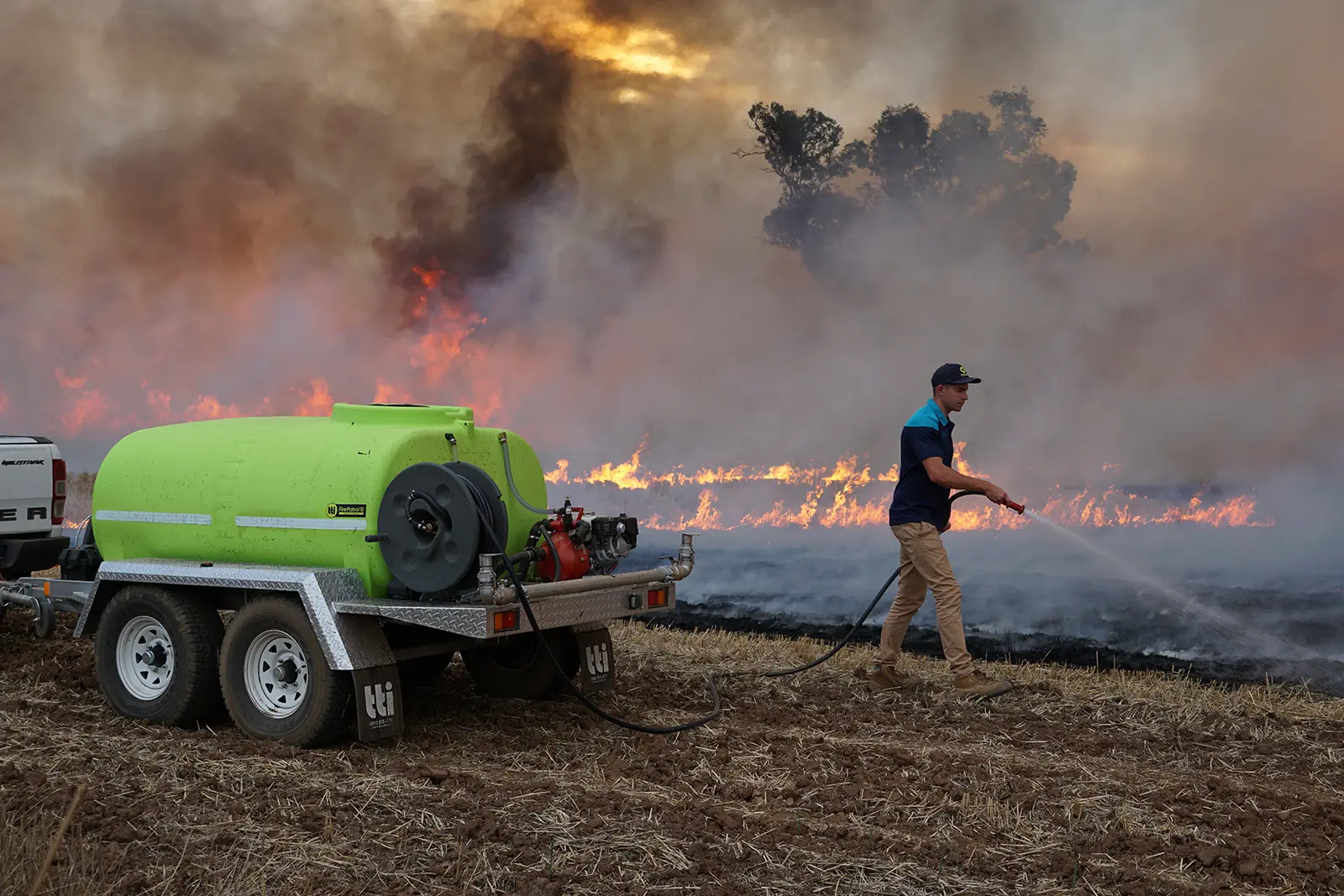Good customer service and good prices, couldn't be happier.
- Naym, Kumpunee

During a bushfire the survival of you and your family is the highest priority. You can replace buildings and belongings, but you can’t replace lives. When a fire starts, put your Bush Fire Survival Plan into action.
What you should do depends on a number of factors like your personal circumstances, who’s at home and whether your plan is to leave early or stay and defend.
Check out the information below on Leaving Early & Stay and Defend.
The safest option during a bush fire is always to leave early. You must decide at what point it is time to leave. The point at which you may decide to leave will depend on your own situation.
What triggers this could be a range of things such as a Fire Danger Rating of Catastrophic or Extreme, or a fire in the vicinity of your home. Set your trigger early, well before a fire threatens your safety.
When you leave, you need to make sure you’re going somewhere that is safer. Choose a safe place to go, like a friend’s or relative’s house, or a shopping centre away from bushland that won’t be affected by fire.
Ask yourself if you are prepared and capable before you decide to Stay and Defend. If not, you should leave early. Before the fire impacts, you need to start defending your property.
When the fire arrives, go inside to protect you from the radiant heat. Ensure you have torches ready as it is likely to become completely dark and you will not be able to see. Shelter in a room that is on the opposite side of the house from the approaching fire – and one that has a clear exit out of the house. Patrol the inside of the home, including the roof space for sparks and embers.
Remember – if your life is at risk, call Triple Zero (000) immediately.
Once the fire has passed, you may need to patrol your property for hours. Go outside and put out any part of your house which is alight. Check under the house as well as in the roof space.
An ember or spark from a fire can impact on a house many hours after the main fire front has passed and small spot fires can quickly get out of control.
Research shows that staying inside a vehicle during a bushfire is very dangerous, with little chance of survival. It’s slightly safer than being caught in the open. However, having a “leave early” or “stay and defend” plan is much safer.
If you encounter smoke or flames on the road, stop as soon as it’s safe. Turn on your headlights and hazard warning lights immediately.
If you need to shelter in your vehicle, drive to a clear area away from trees. Keep your headlights and hazard lights on. Turn off the ignition, close all windows and vents. Cover yourself with wool or cotton blankets to protect against radiant heat. Stay below window level.
Drink water often and stay in the vehicle until the fire passes.
Whether you decide to stay and defend, or evacuate when a bushfire threatens, it is recommend that you have a survival kit prepared and some form of fire fighting equipment. View the Bushfire Store’s full range of Fire Fighting Units and Equipment Here.

⚠️ Disclaimer: The information provided in this article is intended as general guidance only. It is based on publicly available resources and best practices shared by reputable Australian fire authorities, including the Australian Fire Protection Association (AFAC), the Country Fire Authority (CFA – Victoria), and the NSW Rural Fire Service (RFS).
We encourage all readers to refer directly to these official organisations for the most up-to-date and detailed bushfire safety information.
Blog Page. Should You Stay And Defend Against A Bushfire?
Good customer service and good prices, couldn't be happier.
- Naym, Kumpunee
Absolutely fantastic to deal with, prompt service extremely helpful will definitely be dealing with again and again
- Peter Wilson